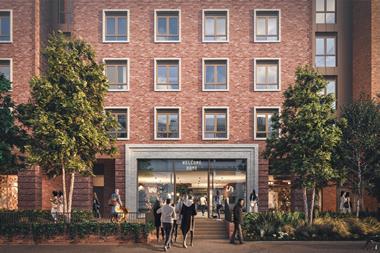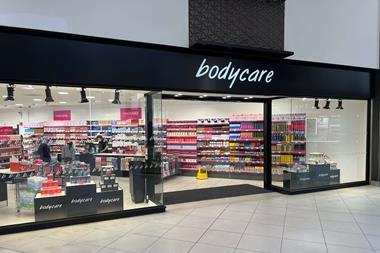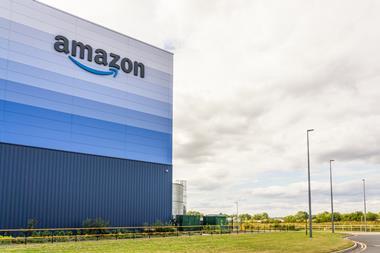The unglamorous city of Derby was an unusual place for the world’s largest shopping centre owner to make its UK debut. It was always intended to make an impression and, a year on from its opening, Derby is still reeling. Having brought a hundred new retailers to the city, as well as drastically altering the city centre, its longer term effects are just starting to emerge.
Few can dispute the fact that Westfield has achieved something of an impressive scale with the new centre. But one of a shopping centre’s roles is to benefit its host city, and there are plenty of people – especially in Derby – who will tell you that this has not happened here.
Ian McMillen, retail director of Bennetts – Derby’s grand old retail store and one of the UK’s oldest department stores – says Westfield Derby has “dramatically changed footfall in the city centre”. So while the opening of the centre may have benefited local shoppers, what has been the effect on surrounding stores? And is Westfield trying to connect with the city?
Westfield identified Derby as a city that was lacking in shopping centre space but had the catchment to support a new centre. At the time of its opening, Westfield managing director for UK and Europe Michael Gutman said: “When we first came to Derby, we saw 20 million people passing through this place a year and we couldn’t understand what they were doing here. In the US or Australia, a city the size of Derby would have four major shopping centres.”
Once it has identified a target market, Westfield certainly doesn’t do things by half. This, its first UK shopping centre, which cost£340 million, was predictably bold and daring. Critics asked whether the scale of the Australian developer’s plans were too big and if there would be enough demand for the number of stores they were building.
One of these questions was emphatically answered last October, when the centre opened 98 per cent let. Filling the 1 million sq ft (92,900 sq m) extension to Derby’s old and tired-looking Eagle centre is an achievement any developer would be proud of.
But whether the rest of Derby agrees with this statement – and more importantly, whether Gutman’s confidence has been borne out a year later – is the real test.
Notably, other major centres to have opened after Westfield Derby, such as Liverpool One and Bristol’s Cabot Circus, are cut from a more modern mould. Derby is more representative of the old-school style of centre construction. In other words, building a box and filling it with shops. The likes of Grosvenor’s Liverpool One reflect the new way of working: taking off the roof and linking new streets to old in order to better integrate the centre to the host city.
Taking over?
Westfield says that the scheme has had a “very positive effect” on Derby. The scheme has taken the city from 53 to 38 in the CACI rankings and boosted its pulling power, increasing the spend it is able to attract by£245 million a year, to£683 million.
Westfield director of shopping centre management and marketing Denis Carruthers says that the scheme has acted as a “catalyst for further investment in the city, which demonstrates the confidence that has grown in Derby as a prime retail and leisure destination within the East Midlands and beyond.”
On first inspection the damage isn’t too great. The centre is trading well and the space immediately surrounding it seems healthy enough – most shops appear fully let. But walk a little further afield to the Sadler Gate and Iron Gate area and things feel much quieter all of a sudden. The streets aren’t empty, but are noticeably calmer than most of the city centre. There are voids and agents’ boards in all directions. In the Strand Arcade, a small shopping walk leading off The Strand, there are two voids and on The Strand itself there are another four.
“It was definitely busier around Sadler Gate and Iron Gate before Debenhams left,” explains Paul Simmons, agency surveyor at Derby-based Milner McCrea. “The professional element is down in that part of town and a lot of people used to stop off in Debenhams on their lunch break. I think it’ll take another 12 to 18 months to pick up.”
And it doesn’t take long to find out why. Near one end of The Strand, the former Debenhams – the retailer now anchors Westfield Derby – lies derelict on Victoria Street. The derelict store’s windows proclaims the fantastic features of Derby’s new centre and a sign that reads: “Debenhams is now in Westfield”.
Bennetts has sat on the same site since 1734. Until last year, it benefited hugely from being close to Marks & Spencer and Debenhams, but, as McMillen explains, trading at Bennetts and the surrounding area have suffered since these two retailers left. “When M&S and Debenhams moved, footfall at this end of the city did go down. It’s starting to pick up, but it’s not back to what it was. People come less often, but I think dwell time has gone up.”
Debenhams eagerly snapped up space in Westfield, as did M&S, which left both of its old city centre stores. Westfield may not be hoovering up trade directly, but the fact that it has taken Debenhams and M&S from the city’s streets has been devastating. “Debenhams leaving has left that end of town a mess,” explains local independent fashion store owner Jillian Hart. “It’s just devastated the middle part of the city. Footfall has dropped 40 per cent around Iron Gate.”
According to Hart, Westfield Derby’s arrival and Debenhams’ departure have left a huge void in the centre of the city that hasn’t been filled. “It has affected Derby radically unfortunately,” she says. “It’s fragmented the city completely.”
If you stand outside the old Debenhams building, you can see six stores lying empty. And the ones that have been re-let have been taken by less than prime tenants, such as a nail bar that is setting up shop just over the road.
But Simmons says that taking Debenhams and M&S out of their existing stores wasn’t Westfield’s original intention. He explains: “They had grand ideas about who they would be able to attract that didn’t come true. They wanted to attract a new large retailer like House of Fraser or John Lewis to the city when, in reality, all they’ve done is relocate two large retailers from the city.”
Mixed reception
Simmons argues that Westfield Derby is certainly a bonus for Derby, because it has meant the creation of modern retail space, but he says it will never compete with Nottingham or Leicester. “I don’t think it’s quite had the effect they wanted it to; I think it was a guinea pig,” he says.
Another coup for Westfield was getting New Look to relocate from both its city centre stores. One of these, a prime unit on the corner of East Street and St Peters Street, still lies empty a year on – unlike M&S’s two units, which have been taken over by Tesco and Primark.
All of this doesn’t exactly reinforce Gutman’s comments that Derby was a city starved of retail. Of course, it is a difficult time and voids are a common sight across the country, but it is difficult to see evidence of the demand that Westfield claimed existed in Derby. As Hart says: “I think they’re realising it’s not quite the bed of roses they thought it would be.”
Other areas of the city are also facing tough times. The Lanes – a weak retail area before the centre opened – looks doomed when you think what is now on offer next door.
Of course, there is always disturbance when any new centre enters an area. Retailers won’t relocate to a shining new centre. The space is often far more suited to their needs, in a better location and experiences the heightened enthusiasm that comes with the buzz of a centre opening.
Westfield Derby has benefited the city in terms of attracting new retailers, but other developers that have opened centres this year have done more to create a flow through the city. In Liverpool, almost all of the buildings left empty by retailers heading for Liverpool One have been replaced by strong retail names such as River Island.
However, in the worst-affected areas of Derby, signs of new retail life are starting to emerge. Primark’s opening in the old M&S store in August was an important step on the road to recovery. Getting the former Debenhams and New Look stores occupied again will be key if the area surrounding Westfield’s centre is going to show real signs of a comeback.
Judging by the state of the lettings market, filling such large city centre units won’t be easy – especially because footfall and spend have dropped in the past year as a result of Westfield Derby’s opening.
Ultimately, Westfield has done what it set out to do: it has built a modern shopping centre in a city that needed more retail. But the resulting move of Debenhams from its city centre spot has left a void that is going to take a long time to fill.


























No comments yet